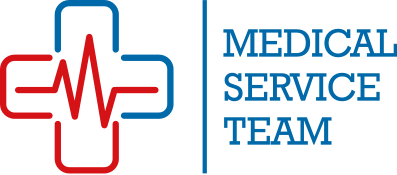MEDICAL EMERGENCY AMBULANCES IN THE EUROPEAN UNION - WHAT YOU NEED TO KNOW?
If you ask anyone what distinguishes the emergency vehicles on the road, the answer will certainly be the color of the vehicle, the markings, the sound and light signals. However, it is worth knowing that ambulances in the various EU Member States may differ. In today's article we explain what the standards for emergency vehicles are in the European Union.
What standards must meet ambulances in the European Union?
There is no uniform set of standards for ambulances in the European Union. Each Member State has its own regulations and standards that set out requirements for ambulance equipment, personnel and procedures.
At the same time, many countries in the European Union rely on general guidelines developed by the World Health Organization (WHO) and the European Commission. These guidelines cover the following issues:
• emergency equipment,
• medical protection equipment,
• rescue equipment,
• standards for medical personnel.
Specific guidelines for ambulances in the EU countries
In some European countries, such as Germany, France and the UK, there are specific standards for ambulances, which cover technical aspects such as size, equipment, communication systems, medical transport and personnel guidelines. In addition, many EU member states have committed themselves to the Directive on Traffic Safety Management Systems. The directive aims to improve road safety, and ambulances are also subject to its requirements.
It is worth knowing that in many EU countries, ambulances are exclusively present in yellow, which gives them excellent visibility in traffic - even after dark. Such vehicles can already be seen among others in Germany and the UK. In 2028, the uniform color of the vehicles will also be introduced in Poland. They are already in use in several cities, such as Słupsk and Rzeszów.
How to behave correctly when you see an ambulance on the road?
The gradual standardization of the visual side of ambulances in the European Union is primarily aimed at increasing their visibility and recognition, including for people coming from other countries. It is worth remembering how to behave correctly when you hear an emergency vehicle coming at a signal. These rules are largely common to all EU member countries.
• The correct behavior towards an emergency vehicle is to allow it to pass smoothly and quickly. When you see an ambulance, in most cases it is sufficient to clear the left-hand lane of the road. If this is not possible, you should move to the side of the road and stop the car. However, it is worth remembering that these actions should be carried out calmly, without endangering other road users.
• On multi-lane roads, drivers who hear an ambulance must create what is known as a 'corridor of life' to make it easier for the vehicle to reach the injured. Remember that in many countries, the creation of a corridor of life is an obligation under traffic law!
• Emergency vehicles using sound and light signals shall have absolute priority of passage in any case.
• Pedestrians who hear an oncoming ambulance should remain alert and refrain from crossing the road (even if the light has just turned green).

